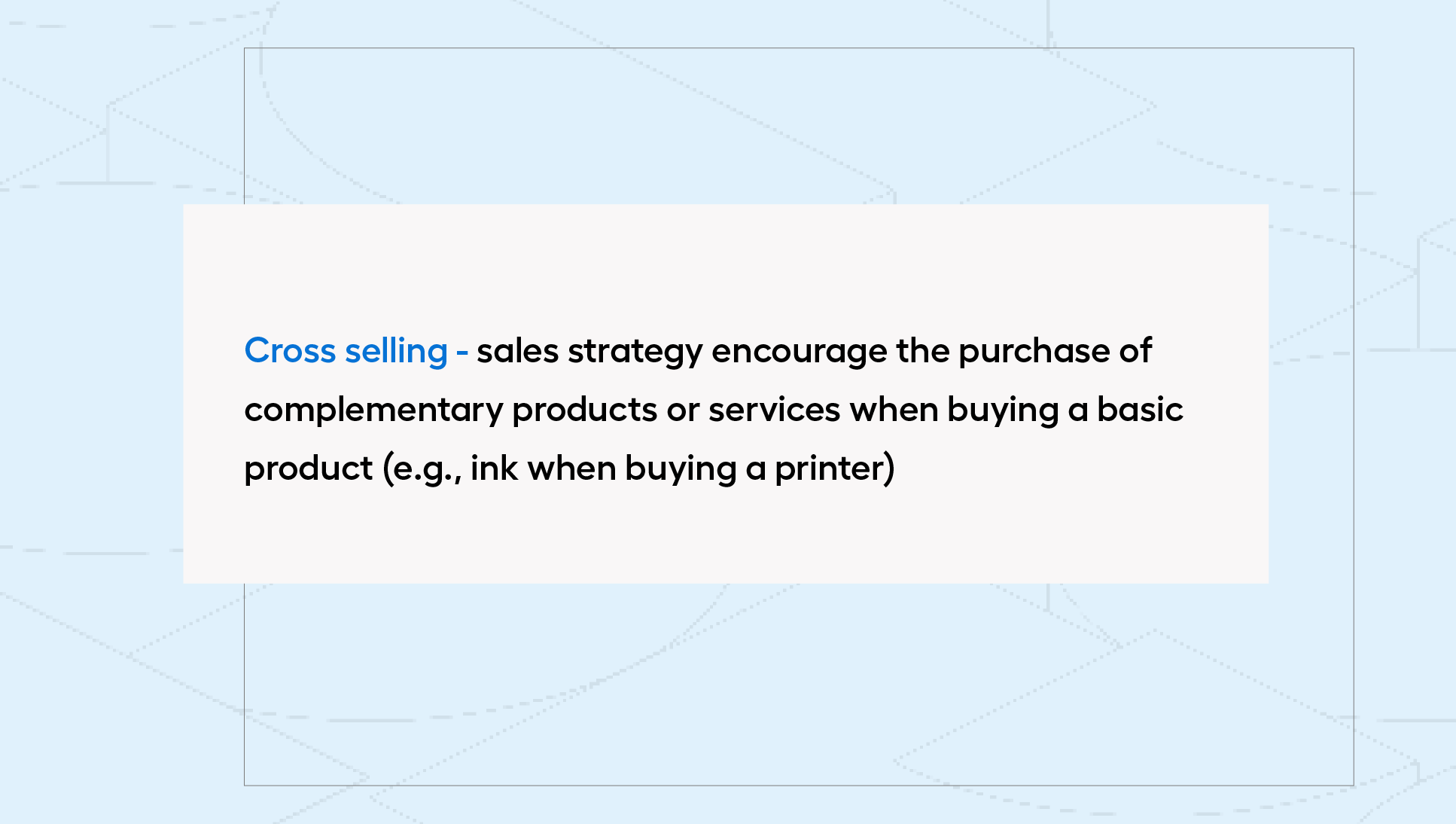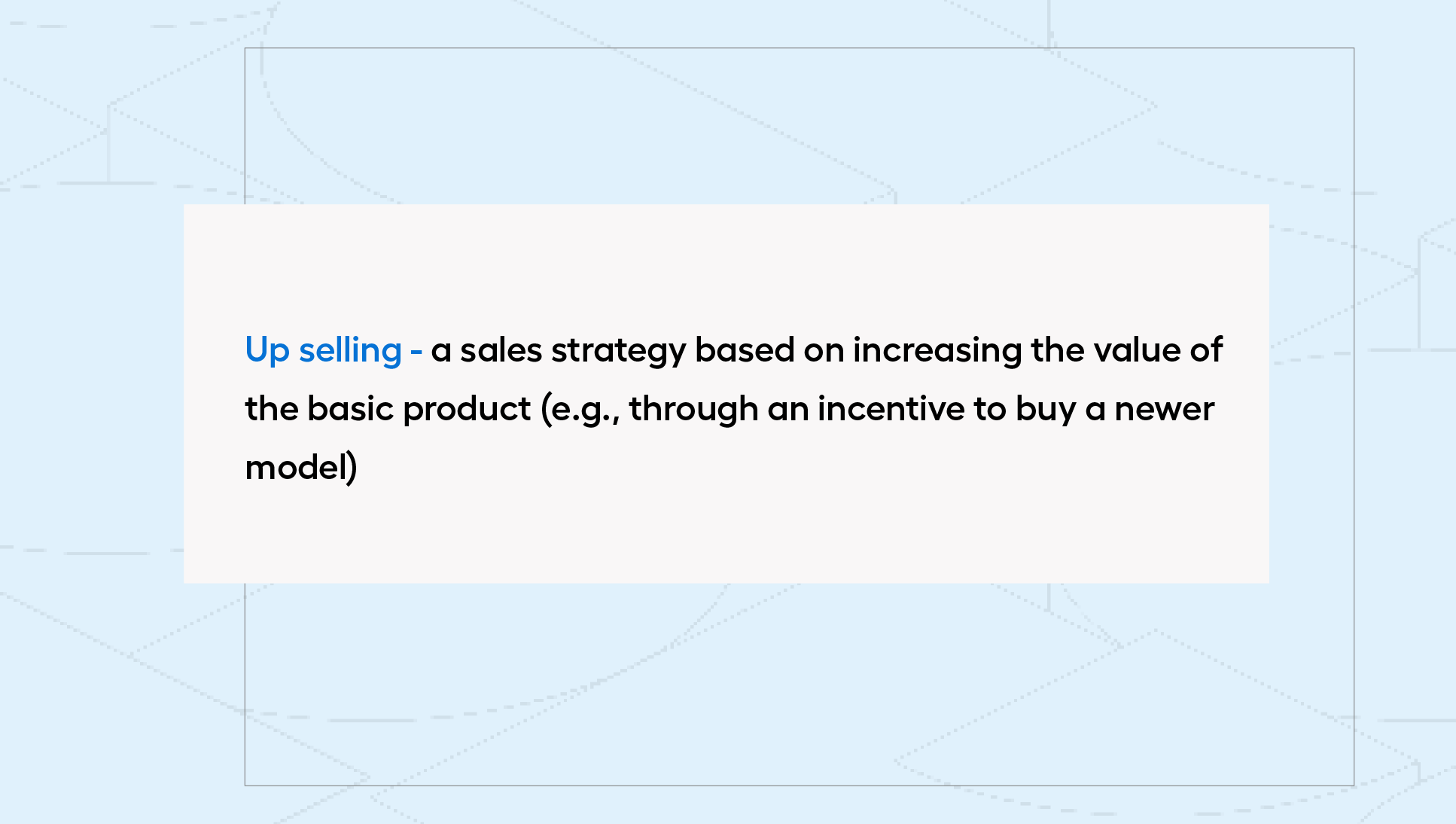Certainly, during stationary shopping, you have more than once experienced a situation in which a salesperson right at the checkout offered you an additional product (e.g. a shoe protection spray when you bought shoes). Very likely, you are also familiar with the scenario in which, when visiting, for example, an electronics store, an assistant helped you choose the best possible product (even if you were initially interested in a different version). The sales techniques described above are cross selling and up selling, respectively. According to Forester's study, the use of these strategies can also prove effective in the online reality, increasing sales profits in your eCommerce by up to 40%. How do you use them in your eCommerce store so as not to create a sense of overwhelm in the customer? Reading this article will help you choose the right tools and create a consistent shopping experience!
Will you opt for up selling, cross selling or will you choose both strategies at the same time?
Cross selling - sell experiences instead of specific products
When a customer visits your online store's website, he or she is often not looking for a specific product, but expects you to solve a problem he or she is currently facing. Understanding the customer's purchasing motivations is an important element that will help you properly tailor your offer to their needs. To this end, it will be helpful to develop a sales strategy (e.g. based on data analysis), as well as to use techniques that will help increase sales. One of them is precisely cross selling. What is the so-called cross selling?

Cross selling is also referred to as complementary selling - such a strategy involves offering customers products or services that complement those they have just purchased (e.g. trekking accessories when buying a touring bicycle) Using this technique promotes an increase in the value of the customer's shopping cart and, consequently, the revenue of your platform. How to put it into practice in your online store?
Cross selling in eCommerce - practical examples
One of the effective ways to implement cross selling in your online store is to place a module with suggestions of complementary products or services in a convenient place for a potential customer. Depending on the user's level of inclination to increase the value of the shopping cart, the type of products or the design of the platform, you can place such functionality, for example:
- on the product grid,
- inside the shopping cart,
- inside the check out,
- or even after the transaction - in an additional email message.
However, simply placing a module with suggested items may not be enough - it is then worth using the platform's capabilities to point out to the customer the additional value of buying complementary products. You can achieve this by:
- engaging CTAs - placing slogans like "customers also bought" or "often bought together" effectively encourages customers to complete their purchases, based on social proof,
- attractive pricing - additional discounts, rebates or loyalty points that customers can use for future purchases can significantly motivate them to increase the value of their shopping cart. Such rewards also influence a positive shopping experience, increasing customer loyalty.
- Product sets - create ready-made product sets. Focus on presenting the benefits (e.g., through photos or video) of cross-buying. Outline how additional items can increase usability, extend life or simply make the main product easier to use.
- Personalization - personally tailored product recommendations can increase the effectiveness of your strategy. Using a customer's purchase history or preferences, you can suggest products that meet their specific needs.
Up selling - a higher level of online sales
Unlike cross selling, up selling does not encourage adding more products to the shopping cart - the basis of this strategy is to increase the value of the core product. Depending on the type of assortment, the salesperson can design the customer a better (e.g. due to more efficient technical parameters) or simply newer model of the item within the same product category. An example of such a scenario could be to convince a user to choose a laptop with higher parameters, allowing him to do his work more efficiently.

An upsell strategy is not only a way to increase the value of an order, but more importantly, it's an opportunity to create a better experience for the customer - by convincing them of a higher product model, you offer them a more valuable solution that better meets their needs and expectations.
How to implement an up selling strategy in an online store?
A key element of effective up selling is the right selection of products. When deciding on this strategy, you must bear in mind that not every type of offer can be presented in this way. For goods that don't have clear differences in quality or features, it's worth looking for other promotional strategies or improving the attractiveness of the offer in other ways (e.g. by adding so-called rich content on the product card). Offering users a premium version of a product (as part of up selling), on the other hand, will work great in industries such as electronics or sports.
When implementing a module for up selling, it is worth following certain guidelines that will increase the effectiveness of this strategy. What is worth paying special attention to?
- PCompare offerings - when presenting products on the site, focus on presenting the specific benefits the customer will get by choosing the better model. Describe the differences in quality, functionality or performance that make the premium option more attractive. Provide specific information, for example, in the form of a table or infographics that easily show the difference.
- Use feedback from other users - in this case, too, it's worth reaching for social proof. This time, use User Generated Content. Post reviews, testimonials or photos taken by satisfied customers who have chosen a higher model of the product. Such content adds credibility and helps dispel any doubts.
- Limit the number of options - with an up selling strategy, it is worth following the principle: "less can mean more." Instead of presenting the customer with many higher-end options, focus on a few of the most attractive ones. Too many choices can overwhelm the customer, and limiting them to a few key options will make their decision easier.
Up selling vs cross selling - which strategy to choose for your online store?
Thoughtful use of cross selling and up selling strategies can increase sales, improve the shopping experience and strengthen customer loyalty. However, you need to keep in mind that despite many similarities, implementing the two strategies requires a different approach. In order to better understand the differences and make the best possible decision, we have prepared a summary of the most important information about both techniques in the form of a clear table.
| CROSS SELLING | UP SELLING | |
|---|---|---|
| Goal | ||
| Examples of tools | discounts and promotions when buying sets mailing with proposals of additional articles |
opinions of satisfied customers comprehensive descriptions and extensive content |
| When to use the technique? | ||
| Adventages | individual approach to the customer building loyalty and relationships with the buyer better use of user preferences and behavior |
|
Up- and cross-selling - more than increasing eCommerce sales
You're probably wondering, what if a customer, despite the incentive, doesn't purchase additional products as part of a cross-selling strategy or decides not to choose a better element of the offer in the context of up-selling? Failure to respond directly to the techniques used (i.e. increase the value of the shopping cart) can still bring benefits - especially in the long term. How is this possible?
Above all, cross and up selling strategies, even if they don't result in direct product sales, contribute to increasing the time a customer spends on your website. By spending more time browsing your offer, the customer will not only remember it for longer, but the extra time will also improve key metrics on your site. Maintaining the right level of metrics such as bounce rate or length of sessions on the site will positively impact the platform's visibility against competitors and Google search positioning.

What's more, even if a user didn't make a purchase as part of your strategy, you can use the data about the products they viewed to further personalize your recommendations, increasing the chances of a future transaction. For this purpose, you can use machine learning, for example, and suggest complementary or higher-quality products to users based on analysis of their preferences and the customer's buying behavior.
What sales strategy will work best for your e-commerce store?
Is up- or cross-selling an essential part of your sales strategy? The choice of the type of up-selling techniques and their effective implementation depends not only on the technical capabilities of the platform, but most importantly on your awareness of the industry in which you operate and your knowledge of buyers' needs. A personalized approach to the customer is key in order to deliver value propositions that truly meet their expectations.
A valuable strategy using up- and cross-selling techniques is a combination of data analysis, creativity and market understanding. The tips outlined in this article are sure to help you achieve a so-called win-win situation, where you simultaneously increase sales and build long-term relationships with your customers by providing them with exactly what they need. Ready for double success?



